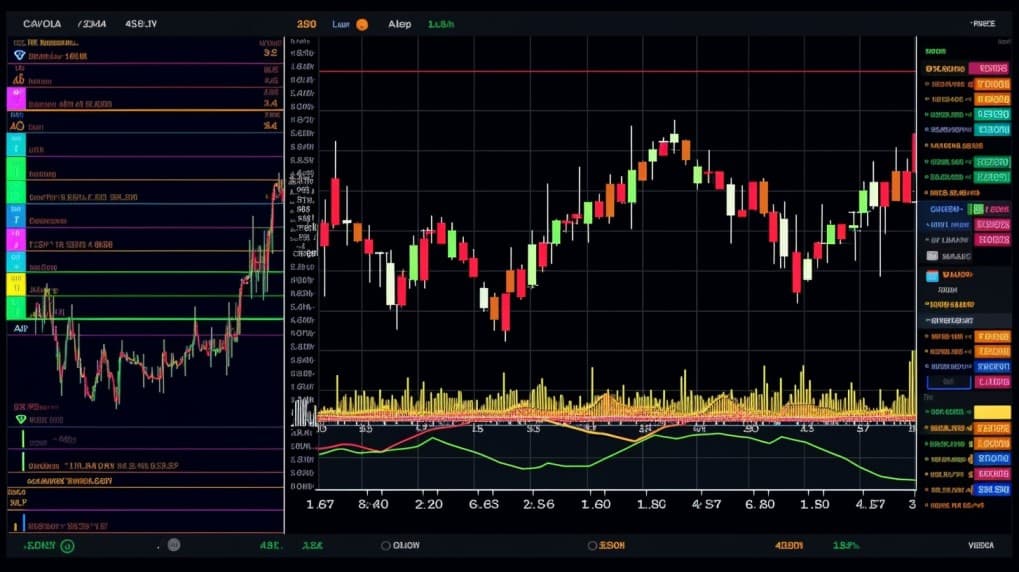
IAU VS AAAU
Exchange-Traded Funds (ETFs) have become an essential part of modern investment portfolios, providing investors with efficient and diversified exposure to a wide range of asset classes and sectors. In this article, we will delve into a comprehensive comparison between two popular ETFs: IAU (iShares Gold Trust) and AAAU (Perth Mint Physical Gold ETF). We'll explore various critical aspects of these ETFs, including their tickers, full names, issuers, sectors, top holdings, capitalization, investment strategy, tracking methods, and exposure.
IAU Vs AAAU: Overview
IAU and AAAU are two ETFs that cater to investors looking to gain exposure to the price movements of gold. IAU is designed to track the performance of gold through physical ownership, while AAAU aims to achieve the same goal by holding allocated gold stored in vaults. This distinction in the underlying asset ownership leads to differences in cost structures, which we will further dissect in the following sections.
IAU Vs AAAU: Sectors and Top Holdings
The IAU ETF's primary focus is on providing investors with direct exposure to the price of gold. As such, its holdings mainly consist of physical gold bars. AAAU, on the other hand, holds gold allocated by the Perth Mint, which is a government-backed institution. This difference in holdings results in varying levels of counterparty risk, which investors should consider when making their investment decisions.
 IAU overlap IAU VS AAAU
IAU overlap IAU VS AAAU
IAU Vs AAAU: Capitalization and Investment Strategy
The iShares Gold Trust (IAU) boasts a substantial asset under management (AUM), indicating its popularity among investors seeking exposure to the precious metal. AAAU, as managed by the Perth Mint, also holds a significant amount of gold, backed by the reputation of a government institution. The choice between IAU and AAAU may come down to personal preferences regarding the issuer's reputation and the ownership structure of the gold.
IAU Vs AAAU: Tracking Methods and Exposure
IAU aims to closely track the daily price movements of gold by holding physical gold bars. In contrast, AAAU achieves its tracking by holding gold that is allocated, stored, and verified by the Perth Mint. While both ETFs offer exposure to the price of gold, the specific tracking methods they employ may appeal to different types of investors. Some may prefer the simplicity of holding physical gold bars (IAU), while others may find reassurance in the verification process of allocated gold (AAAU).
Conclusion
When considering investment options in the gold market, both IAU and AAAU provide distinct approaches to gaining exposure to this precious metal. IAU offers the simplicity of owning physical gold bars, directly mirroring its price movements. On the other hand, AAAU combines the convenience of ETF trading with the reassurance of holding government-backed allocated gold.
For investors seeking comprehensive insights into these ETFs, including their holdings, correlations, overlaps, and other crucial information, the ETF Insider app proves to be an invaluable tool. With its user-friendly interface, investors can make more informed decisions based on data-driven analysis. However, it's important to remember that while such tools can provide valuable insights, they do not replace the need for thorough research and careful consideration of one's investment objectives and risk tolerance.
Disclaimer: This article is intended for informational purposes only and does not provide any investment advisory services. Investing in ETFs and financial instruments involves risks, and readers should conduct their own research and consult with financial professionals before making any investment decisions.
Sources:
iShares Gold Trust (IAU) Official Website: [insert link]
Perth Mint Physical Gold ETF (AAAU) Official Website: [insert link]
IAU ETF issuer
IAU ETF official page
IAU quote and analysis
Discover the top holdings, correlations, and overlaps of ETFs using our visualization tool.
Our app allows you to build and track your portfolio.
To learn more about the IAU iShares Gold Trust, access our dedicated page now.
FAQ
Why is IAU better than AAAU?
IAU may be considered better than AAAU for some investors due to its specific focus, offering diversification.
Does AAAU beat IAU?
AAAU's performance relative to IAU will vary over time, depending on market conditions.
Should I invest in IAU or AAAU?
The choice between IAU and AAAU should align with your investment goals, risk tolerance, and desired exposure.
Are IAU and AAAU good investments?
Both IAU and AAAU can be suitable investments depending on individual investment strategies, goals, and risk profiles.
What is the correlation between IAU and AAAU?
The correlation between IAU and AAAU can vary over time, reflecting differences in performance.